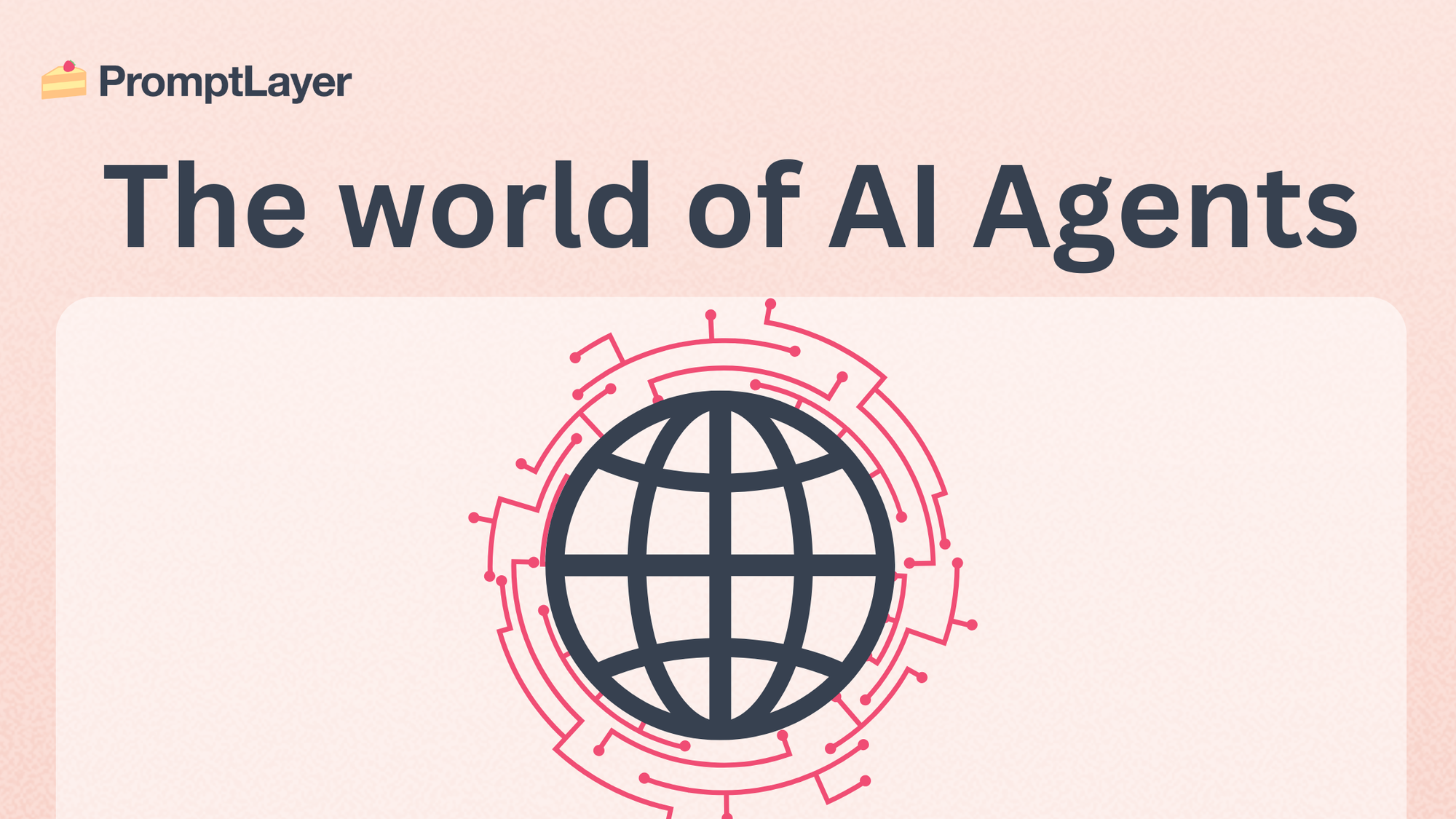LLM Agents Explained: Types, Use Cases, and Future Trends

Large Language Model (LLM) agents have rapidly evolved, becoming one of the hot topics in the tech industry. Initially designed for natural language processing tasks, LLMs can now serve as autonomous agents capable of complex decision-making and task execution.
In this guide, we’ll explore the basics of LLM Agents, their types (such as Conversational Agents, Task-Oriented Agents, Creative Agents, and more), real-world applications, and the emerging trends driving their evolution.
Whether you're a tech enthusiast, a professional exploring AI, or someone curious about how these systems work, this guide will provide valuable insights into the ever-expanding world of LLM Agents.
What are LLM Agents?
LLM Agents are advanced AI systems that leverage large language models to autonomously perform tasks by interpreting inputs, planning actions, and executing them using integrated tools.
Unlike traditional chatbots, which are limited to predefined responses, LLM Agents can exhibit complex reasoning, maintain memory of past interactions, and adapt their behavior based on environmental feedback. This enables them to handle intricate tasks across various domains, from automating workflows to providing personalized assistance
Different Types of LLM Agents
In 2024, Large Language Model (LLM) agents have diversified into specialized categories, each tailored to specific functionalities and applications. Here's an overview of the different types of LLM agents:
1. Conversational Agents
These agents engage in natural dialogue with users, providing information, answering questions, and assisting with various tasks. They rely on LLMs to understand and generate human-like responses.
Example: Customer support chatbots that handle inquiries and provide solutions.
2. Task-Oriented Agents
Focused on performing specific tasks or achieving predefined objectives, these agents interact with users to understand their needs and then execute actions to fulfill those needs.
Example: AI assistants that schedule appointments or manage emails.
3. Creative Agents
Capable of generating original and creative content such as artwork, music, or writing, these agents use LLMs to understand human preferences and artistic styles, enabling them to produce content that resonates with audiences.
Example: Content generation tools that draft articles or create digital art.
4. Collaborative Agents
These agents work alongside humans to accomplish shared goals or tasks, facilitating communication, coordination, and cooperation between team members or between humans and machines. LLMs may support collaborative agents by assisting in decision-making, generating reports, or providing insights.
Example: Project management bots that help teams coordinate tasks and deadlines.
5. Multimodal Agents
Extending beyond text, multimodal agents process and generate content across various formats, including audio, images, and video. This capability allows for richer and more immersive interactions.
Example: Virtual assistants that can interpret visual data or generate images based on textual descriptions.
6. Autonomous Agents
Designed to operate with minimal human intervention, autonomous agents can make decisions and perform actions independently. They are often used in environments where continuous operation is essential.
Example: Robotic process automation bots that handle repetitive tasks in business processes.
7. Multi-Agent Systems
Involving multiple LLM agents working collaboratively, these systems tackle complex tasks by leveraging the strengths of various specialized agents. They communicate and coordinate to achieve common objectives.
Example: A team of agents where one gathers data, another analyzes it, and a third generates reports based on the analysis.
Understanding these categories helps in selecting the appropriate type of LLM agent for specific applications, ensuring optimal performance and user experience.
PromptLayer provides the tools to manage and monitor prompts with your whole team. Get started here.
Real-World Applications of LLM Agents
LLM agents are now essential across industries, providing innovative solutions to complex challenges. Below are some notable real-world applications across different industries:
Healthcare
Clinical Decision Support: LLM agents assist healthcare professionals by analyzing patient data and medical literature to provide evidence-based treatment recommendations. For instance, Meditron, a Llama-based model, has been fine-tuned on clinical guidelines and medical research to enhance diagnostic accuracy and patient care.
Patient Interaction: Virtual health assistants powered by LLMs engage with patients, offering personalized health advice, appointment scheduling, and medication reminders, thereby improving patient engagement and adherence to treatment plans.
Finance
Fraud Detection: Financial institutions employ LLM agents to monitor transactions and identify patterns indicative of fraudulent activities, enhancing security and trust in financial systems.
Investment Analysis: LLM agents analyze vast financial datasets to provide insights into market trends, aiding investors in making informed decisions. They can generate comprehensive reports and forecasts based on real-time data.
Education
Personalized Learning: Educational platforms utilize LLM agents to create customized learning experiences, adapting content to individual student needs and learning styles. For example, AI tutors can simulate classroom interactions, providing tailored feedback and support.
Content Creation: LLM agents assist educators in developing course materials, quizzes, and interactive content, streamlining the curriculum development process and ensuring content relevance.
Legal
Document Review: Law firms leverage LLM agents to analyze legal documents, contracts, and case law, expediting the review process and identifying critical information with high accuracy.
Legal Research: LLM agents can quickly retrieve and summarize pertinent legal precedents and statutes, supporting attorneys in case preparation and strategy development.
Customer Service
Automated Support: Companies deploy LLM-powered chatbots to handle customer inquiries, providing instant responses and resolving common issues, thereby enhancing customer satisfaction and reducing operational costs.
Sentiment Analysis: LLM agents analyze customer feedback to gauge sentiment, enabling businesses to address concerns proactively and improve their products or services.
Media and Entertainment
Content Generation: LLM agents are used to create scripts, articles, and marketing materials, assisting writers and marketers in generating creative content efficiently.
Interactive Experiences: In gaming and virtual reality, LLM agents enable dynamic storytelling and character interactions, providing users with immersive and personalized experiences.
Emerging Trends and Future Prospects
As we look ahead, LLM agents are poised to move past traditional applications, embedding themselves into the very fabric of our daily lives.
Beyond their current roles, these agents can become integral components of our personal and professional ecosystems, operating seamlessly and sometimes imperceptibly.
Ambient Intelligence Integration
Agents could be built into ambient intelligence systems, continuously monitoring and interpreting our environments to provide context-aware assistance. Imagine a workspace where an LLM agent autonomously organizes your schedule, drafts emails based on brief verbal cues, and anticipates your informational needs by proactively gathering relevant data. This level of integration would transform passive tools into active collaborators, enhancing productivity and reducing cognitive load.
Emotional Intelligence and Empathy
Future LLM agents could be developed with advanced emotional intelligence, enabling them to recognize and respond to human emotions with empathy. In customer service, for instance, an LLM agent could detect frustration in a client's tone and adjust its responses to de-escalate tension, providing a more personalized and human-like interaction. This emotional ability could extend to mental health applications, where agents offer supportive dialogues to individuals in need.
Autonomous Decision-Making
Advancements in LLM capabilities may lead to agents capable of autonomous decision-making within defined parameters. In financial management, an LLM agent could independently execute low-risk investment strategies based on real-time market analysis, adhering to user-defined risk tolerances. This autonomy would allow users to delegate routine decision-making tasks, focusing their attention on more strategic considerations.
Ethical and Transparent Operations
As LLM agents become more autonomous, ensuring ethical behavior and transparency will be paramount. Developing agents with built-in ethical frameworks and the ability to explain their decision-making processes will be crucial in building trust and accountability. For example, in legal advisory roles, an LLM agent could provide not only recommendations but also the rationale behind them, allowing users to make informed decisions.
The future of LLM agents lies in their seamless integration into our daily lives. These advancements will transform LLM agents from tools into partners, enhancing human capabilities and enriching our interactions with technology.
Conclusion
The evolution in types of LLM agents marks a leap in artificial intelligence, promising to reshape how we interact with technology and automate tasks.
From healthcare and finance to education and customer service, these agents are proving their worth by streamlining processes, enhancing decision-making, and personalizing user experiences.
As LLM agents continue to advance, integrating seamlessly into our daily lives, we can expect even more innovative applications that will redefine our relationship with AI, ultimately leading to increased efficiency, creativity, and productivity.
About PromptLayer
PromptLayer is a prompt management system that helps you iterate on prompts faster — further speeding up the development cycle! Use their prompt CMS to update a prompt, run evaluations, and deploy it to production in minutes. Check them out here. 🍰



